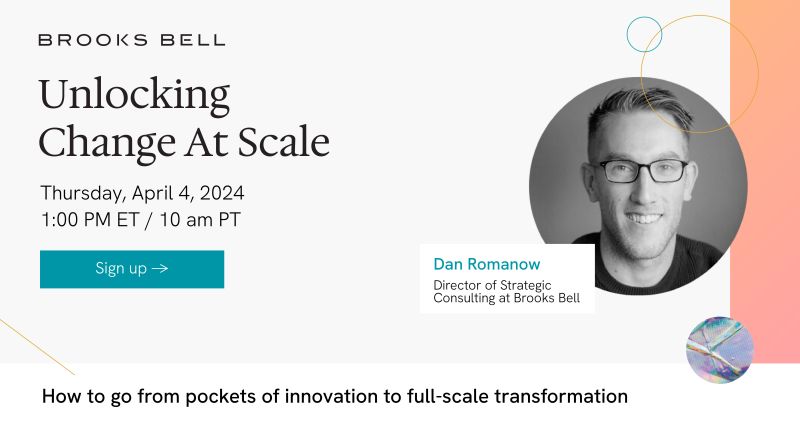
It’s 11:03 on Tuesday morning and you are meeting with your product and engineering teams explaining the newest changes coming to the organization. You’ve just announced that teams will be reorganized around product areas instead of role. You can see the eye rolls and muted groans flash across your screen. Someone raises a hand…
“Why are we doing this?”
Thumbs-up icons float upwards as your colleagues revel in the question. They are happy with the current set-up. Of course, there are problems here and there, but they’ve learned to live with those. Those are their problems. They don’t want any new ones.
Situations like this are common across businesses from retail to software to manufacturing. Leaders see issues as fixable and jump to the next big solution with zeal. Employees struggle to understand. Why do they need to adjust their teams, their processes, or their tools? They’re working well enough as is.
Change is inherently difficult. We can accept that, but it shouldn’t be nearly as painful and confusing as companies make it. Organizations fall into the same traps again and again. Here are the most common ways companies fail when setting out on their change management journey.
Pitfall #1: Failing to provide the reason for changing
This one seems basic but is often the biggest mistake made. Companies identify a problem. It may be as simple as spending $4 million / year on a messaging platform. They can switch to a competitor for half the price over the next decade. The downsides are minimal and the upside is $20 million to invest elsewhere. They decide to make the change.
They inform the teams via a mass email but leave out that it is a major cost-cutting move. The company is “protecting” its image internally. The email states that they are excited to switch to this new platform with most of the same features. Sometimes they even regretfully note the things they are losing. But why are you doing this?
I have seen this first-hand. Most employees see no benefit to the switch. They just see a wave of email communications, panicked meetings, and a new tool for them to learn. They may suspect it’s a cost-cutting move but assume that the price reduction is miniscule. They may even think that it’s merely something somebody wanted to do.
Clear communication is crucial to any change. Employees may not need to agree, but they deserve to know the ‘why’ – cost savings, scalability, removing blockers, etc.
This leads us to our next major pitfall…
Pitfall #2: Catering to the most resistant employees
The person who asked “Why are we doing this?” in your first meeting may be the first to accept new changes, but they can also be the ones asking “Do I really need to work that way?” a few months down the road. This is common and usually around the time when you need to stop catering to the slowest-moving members of the organization.
I remember when I was moving a QA team to a new process flow that aligned with engineering. The manager fiercely opposed me over everything they were “losing” with the new system, causing delays and extra work for others. Every day we waited hindered cross-functional collaboration and eroded the confidence of everyone in the switch.
Eventually, a deadline was set with clear communication on where to make any last requirements when the change happened. They argued. The day came. The change happened. Two weeks later, they had fully adjusted, and overall team efficiency improved. Ultimatums can be dangerous and counter-productive, but there can be a bigger risk in waiting around for the stragglers to catch up. In fact, waiting too long brings our next major pitfall…
Pitfall #3: Dragging out the timeline
“We will be switching to a new organizational model in the next year.” We’ve all received emails like this that announce a shift in tools or a total reorg with a vague promise of information to come. The worry sets in immediately. The change doesn’t.
I find that this mistake comes from a place of good intentions. You want to keep colleagues informed on what’s to come, the problem lies in creating one more stressor long before it needs to exist. How long do you really need to know before something changes at your job? One week? One month? One year?
Humans are incredibly resistant and adaptable creatures. We adjusted to remote work over the course of a long weekend in 2020. AI integration is happening faster than we can regulate. People will figure out almost any new thing you throw at them. Dragging out change for eight months before doing anything is counterproductive.
Announce the changes when you are ready to act on them, not when you first think of them. Give your people the benefit of the doubt that they can adjust. Of course, you still want your employees to have a chance to succeed which leads us to our last major pitfall…
Pitfall #4: Making the change unnecessarily difficult
Earlier in my career I was tasked with creating a set of functioning scrum teams from a large group of people in different departments who hardly knew each other. I planned the merges diligently, set up parallel schedules, clear touchpoints, idealist processes, and a slew of very important things we would do. I gave up 80% of my ideas after four weeks. It was too much.
That first month was chaotic and disheartening. Our new Jira boards confused the designers. Our retrospectives annoyed the developers. The team was losing trust in the idea.
Change need not be perfect, but it should be easy and impactful. The 20% I kept was all that mattered in the short-term. These teams needed regular communication, a coherent backlog, and a plan for the future. Everything else was secondary.
Recommended Read: Performance Management: Pioneering Precision in Organizational Alignment
Fast forward a few years and I was tasked with replacing a convoluted organizational idea-suggestion process. I could have improved it a thousand ways or required the team to recreate everything. Instead, I made the new process resemble the old one while fixing the obvious issues. I created clear training and documentation that answered every reasonable question. I recreated their dashboards to function fully straightaway. I focused on 100% buy-in over 100% improvement. That could come later.
The day of change arrived. The new idea requests flowed in. A few questions trickled my way. The number one comment I received? “That was easy.”
Next steps
People always talk about how difficult change can be. They seem to relish the painfulness of the process and the distrust that it brews, but change is necessary to drive an organization forward. Finding the right way to go about it is the hard part.
At Brooks Bell, we’ve helped numerous organizations sift through what is needed for change. We identify those bits that actually matter. We capitalize on the easy transitions and we empower you to make decisive decisions, quickly.
If you’re weighing a big change, or struggling to transform your organization from good to great, we invite you to join our live webinar on Thursday, April 4 at 1:00 pm ET.

Tailored specifically to the needs of marketing and CX leaders, this 45-minute interactive session will explore critical components of leading organizational change, including:
- Strategies for navigating the adoption curve and gaining change alliances.
- How to define success and gain organizational excitement around transformation initiatives.
- Change management techniques to shift mindsets and behaviors across the organization.
- Recalibrating performance to reinforce new behaviors and activities.










